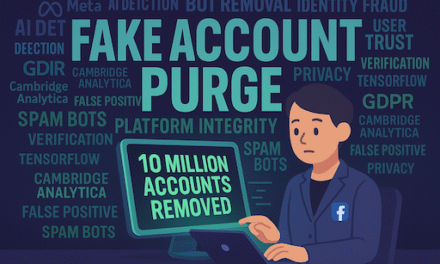Inside Clorox’s $380M Hack: Technological Oversight and Strategic Failures
Compelling Opening
In one of the most alarming cybersecurity breaches of 2023, Clorox, a multinational conglomerate renowned for its cleaning products, found itself at the center of a $380 million financial catastrophe following a hack that experts suggest was nothing short of preventable. According to a recent report, this breach was facilitated by the inadvertent actions of a third-party service vendor who allegedly handed over crucial password information. This colossal oversight now has Clorox embroiled in legal disputes and has sparked significant discourse across the tech industry about the vulnerabilities inherent in IT service desk operations. The incident underlines the frailty of security practices and the severe consequences that can follow, serving as a clarion call for corporations to revisit their cybersecurity protocols.
As the case unfolds, it reveals nuances of cybersecurity, emphasizing not only the technical aspects but also the business and strategic dimensions. Our analysis provides a detailed breakdown of how such a breach could occur, the measurable impact on the company and the broader industry, and the lessons organizations can learn to fortify themselves against similar threats.
Comprehensive Background
The unfortunate event in Clorox’s history is not an isolated incident but rather part of a broader trend of security breaches escalating in frequency and scale. In recent years, high-profile companies like Target, whose 2013 data breach cost approximately $162 million, and Yahoo, facing potential damages reaching $350 million from their infamous 2013-2014 hacks, have shown that even industry giants are vulnerable. Clorox, like many companies, outsources certain operational factors to enhance efficiency, including its IT service desk functions. However, such outsourcing has proven to be double-edged, offering cost efficiencies while potentially exposing internal processes to external risks.
Key players in this scenario include not only Clorox but also the unnamed service desk vendor, whose responsibility in the breach is central to the unfolding litigation. The motives behind outsourcing, often driven by cost-cutting and efficiency optimization, can overshadow potential security implications, especially when vendors do not adhere to industry-standard security practices.
The timeline of events shows that the hack likely began with a social engineering exploit, a glaringly effective method of cyber attack where hackers persuade individuals to reveal confidential information. This kind of attack points to vulnerabilities in the security education of personnel, possibly exacerbated by lax vendor oversight. Regulatory implications are also at play, with frameworks like the General Data Protection Regulation (GDPR) and California Consumer Privacy Act (CCPA) imposing hefty penalties for data protection failures.
Deep Technical Analysis
Diving into the technical aspects of this incident, the breach likely followed a sophisticated multifaceted approach common in modern cyber attacks, which can include social engineering, phishing, and credential stuffing — all exploiting the weakest link in cyber fortresses: human error. The hackers, leveraging social engineering, might have initiated contact with the service desk disguised as internal personnel, requesting password reset information or exploiting any available loophole in identity verification protocols.
From an architectural and technical standpoint, one potential vulnerability could have involved insufficiently secured REST APIs used in service desk operations, which sometimes lack multi-factor authentication (MFA) layers. As recommended by cybersecurity experts and institutions like the National Institute of Standards and Technology (NIST), enforcing additional security protocols such as secure socket layer (SSL) certificates and Transport Layer Security (TLS) encryption could mitigate password interception risks.
Additionally, technical specialists recommend the implementation of machine learning algorithms for anomaly detection in network traffic patterns. Such algorithms, potentially implemented in Splunk or log aggregation and analysis solutions like ELK Stack, can significantly diminish breach response times by highlighting deviations from normal traffic behaviors.
Performance metrics indicate that a breach of this nature typically exploits the inherent lag in incident detection and response, highlighting a need for rapid incident response teams (IRTs) and automated security operations center (SOC) workflows powered by platforms like Cortex XSOAR from Palo Alto Networks. Moreover, alternative approaches that focus on zero-trust network architectures promise a shift from the vulnerable perimeter-based paradigm to a more resilient posture focused on strict identity verification.
Multi-Faceted Industry Impact
The immediate aftermath of the hacking incident saw a predictable decline in Clorox’s stock value, impacting investor confidence as cybersecurity became a focal point in boardroom discussions. It’s pivotal to recognize that this situation arguably positions Clorox disadvantageously in the short term, causing disruptions in their supply chain due to cybersecurity-induced credibility issues.
Long-term industry transformations are anticipated as companies are expected to accelerate the adoption of advanced threat protection systems and move towards preventive cybersecurity models focusing on AI-driven analytics and behavioral insights. The competitive landscape further tilts, pressuring service vendors to bolster their security offerings, perhaps by integrating automated password rotation solutions from companies like CyberArk or passwordless environments promoted by Yubico.
This incident catalyzes potential startup opportunities, particularly in RegTech aimed at compliance automation and CyberTech focusing on enhanced multi-factor authentication systems, due to the tightening regulatory atmospheres of North America and Europe. Further, venture capital interest is predicted to peak concerning technologies fortifying supply chain cybersecurity facets, as these domains increasingly intertwine with IoT and Industry 4.0 advancements.
Future Landscape Analysis
In the coming six months, Clorox will likely prioritize remediation efforts, tightening security governance, and deploying state-of-the-art cyber defense systems. By 2026, we expect regulatory bodies in the US and EU to push for stricter compliance measures focusing specifically on vendor-related security protocols.
Long-term, the next three years could witness an estimated 30% growth in the cybersecurity industry, driven by rising corporate and governmental investments, with market size projections touching $250 billion globally, emphasizing endpoint protection, threat intelligence, and stricter governance frameworks.
Emerging business models will likely revolve around service desk automation integrated with AI-driven security assessments, hindering the prevalence of human errors while promoting digital transformation in cybersecurity strategies. For Clorox, cementing industry resilience through partnership sourcing and bolstered vendor contracts sits atop its strategic priorities.
Expert Perspectives & Case Studies
Industry leaders like IBM Security, advocating for a robust cyber readiness framework, emphasize integrating continuous security training for personnel to mitigate human error risks. Moreover, the case echoes the 2014 Sony Pictures hack, reiterating the critical role of internal vigilance and robust password policies in safeguarding digital assets.
Organizations could draw insights from Microsoft’s adaptive security architecture frameworks, focusing on continuous diagnostics and mitigation strategies. Logicalis, a prominent IT solutions provider, also advocates for empowering cybersecurity through AI and machine learning, endorsing resilient strategies against evolving threat vectors.
Actionable Strategic Recommendations
For technical teams, adopting security tools like SentinelOne and CrowdStrike that apply AI-based preventative measures is imperative. Business leaders should consider comprehensive risk assessments of third-party vendors and invest in cybersecurity insurance to mitigate potential risks. Investors may find new opportunities in the cybersecurity sector’s growth, vetting emergent startups with innovative security solutions.
For developers, honing skills in AI and ML security protocols, particularly in anomaly detection, could prove vital. Tools such as Kubernetes for secure application management and further specialization in secure coding practices could significantly bolster defense-in-depth strategies.



